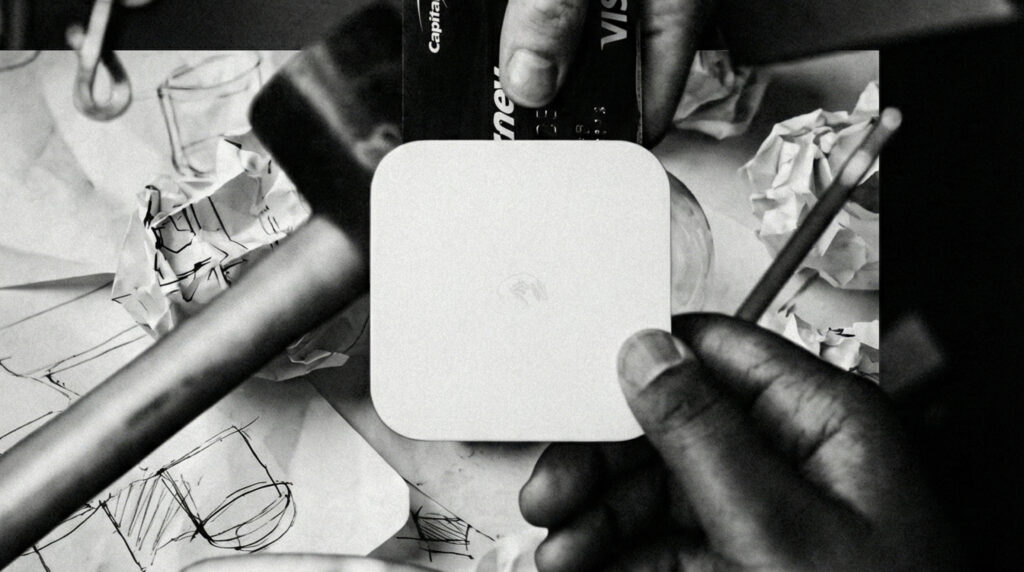
How Brands Leverage ‘Anchoring’ to Increase Conversions
10 Min ReadIn the 1970s, psychologists Daniel Kahneman and Amos Tversky conducted a landmark experiment. They spun a wheel of fortune with numbers from 0 to 100, then asked participants a simple question: is the percentage of African nations in the UN higher or lower than that number? Afterwards, they asked for their best guess. The results were staggering. The completely random number from the wheel acted as a powerful anchor, profoundly skewing the participants’ estimates.
This isn’t a fun party trick. It’s a fundamental law of human cognition. The first piece of information we receive, the anchor, becomes the immovable reference point for all subsequent judgments. Most brands either ignore this law or abuse it with deceptive tactics.
The brutal truth is that you are already anchoring your customers, whether you know it or not. The only question is whether you are doing it strategically and ethically. At CUT THRU, we don’t just design products or prices; we architect the perception of value itself, using the science of anchoring to make our clients’ offers irresistible.
The Value Vacuum: Why Sloppy Pricing Fails
When a customer lands on a product page without a clear anchor, they are in a value vacuum. They have no context to judge whether a price is fair, a bargain, or a rip-off. This creates decision paralysis. In this state of confusion, they will either default to the cheapest available option or abandon the purchase altogether.
Brands that use arbitrarily inflated “list prices” or confusing discounts are making a different but equally fatal error. Today’s savvy consumer is armed with price comparison tools and a healthy dose of scepticism. As the 2024 Edelman Trust Barometer shows, 70% of consumers will reject a brand they perceive as having misleading pricing. A deceptive anchor doesn’t just fail to persuade; it actively destroys the trust that is the foundation of any sustainable brand.
The Value Anchor Blueprint: A Framework for Ethical Price Perception
You cannot avoid anchoring. You can only choose to do it ethically and effectively. Our framework is a systematic process for establishing powerful, credible anchors that frame your offer in the best possible light, building trust while driving conversions.
Pillar 1: The Psychology of the First Number
The Psychology: Anchoring is a product of our “System 1” thinking—the fast, intuitive, and non-analytical part of our brain. It latches onto the first number it sees and uses it as a mental shortcut, regardless of how arbitrary that number might be.The Dark Tactic: Creating a completely fictional, wildly inflated “Manufacturer’s Suggested Retail Price” (MSRP) for a product that has never, and will never, sell at that price. This is a lie, and it trains customers to distrust all of your pricing.The Ethical Counter: Anchor Against Long-Term Value, Not a Fake Price.For our client Hyloh, a premium architectural hardware brand, their products are an investment. The ethical anchor isn’t a fake discount; it’s the context of longevity. We helped them frame their pricing not as a one-off cost, but in the context of a 20-year architectural lifespan. Anchoring the price against two decades of flawless performance makes the initial investment seem rational and incredibly valuable.
Pillar 2: Crafting Credible Price Architecture
The Psychology: The classic “was/now” price format is effective because it anchors the user to the higher price, making the current price feel like a gain. However, its effectiveness is directly proportional to its credibility.The Dark Tactic: Constantly running a “50% off” sale, which quickly teaches customers that the “original” price is meaningless and the “sale” price is the real price.The Ethical Counter: Anchor Against a Real, Verifiable Price.For Paperform, a SaaS tool, we helped them structure their annual plan offer. The anchor—the standard monthly price—is real and verifiable. By showing the crossed-out monthly total for a year versus the discounted annual price, they create a powerful and honest anchor. The perceived saving is significant because the anchor it’s based on is true.
Pillar 3: Amplifying the Anchor with Context
The Psychology: As behavioural science expert Rory Sutherland notes, a number is just a number until you give it context. The right context can dramatically change the perceived value of an offer.The Dark Tactic: Comparing your product to a much more expensive competitor, but failing to mention that the competitor’s product has vastly superior features.The Ethical Counter: Anchor Against the High Cost of the Alternative.For Blossom, an investment app with a small, transparent fee, the most powerful anchor isn’t another app’s price; it’s the cost of the traditional alternative. We helped them create messaging that implicitly anchors their low fee against the exorbitant fees charged by traditional financial advisors. This contextual anchor makes their offer seem not just affordable, but like an incredible bargain.
Pillar 4: Using Non-Price Anchors
The Psychology: The most sophisticated strategists know that anchors don’t have to be about price. You can anchor a user’s perception with social proof, time, or features.The Dark Tactic: Displaying a “regular” version of a product with a long list of features it doesn’t have, to make the “premium” version seem more valuable than it is.The Ethical Counter: Anchor with Overwhelming Social Proof.For Talent Recap, a global media brand, the value of their platform is anchored by the size of their community. By prominently displaying metrics like “Join the 5 million fans who get their daily updates here,” they anchor the value of their content not with a price, but with a powerful social signal. The anchor isn’t a dollar figure; it’s the overwhelming sense that this is the place to be, making the decision to engage feel natural and obvious.
Implementation Guide: An Ethical Anchoring Strategy
- Audit Your Pricing Strategy: Review every price on your site. Is there a clear, credible anchor? We audited a client’s site and replaced fake “MSRPs” with fair, value-based anchors, boosting trust.
- Establish Credible “Was” Prices: If you run sales, ensure your original prices are real. We worked with Paperform to ensure their annual discount was anchored against their genuine monthly price.
- Run Split Tests on Context: Test different contextual frames for your price. For Blossom, we would test messaging that anchors their fee against competitor apps versus messaging that anchors it against traditional advisors to see which provides a stronger perception of value.
- Leverage Non-Price Anchors: Brainstorm ways to anchor value using social proof, time saved, or unique features, like we did for Talent Recap.
- Seek an Expert Opinion: Pricing psychology is complex and deeply counter-intuitive. An objective audit from the best branding agency in Sydney can identify powerful anchoring opportunities you’ve overlooked.
Common Anchoring Pitfalls to Avoid
- Overinflated Anchors: A ridiculously high “list price” for a low-quality item is one of the fastest ways to signal that your brand is untrustworthy.
- Hidden Add-On Costs: Anchoring a low base price and then surprising the user with high shipping fees or taxes at the final step creates resentment and kills conversions.
- Inconsistent Pricing: If your anchors and prices are erratic across your site, you create confusion and undermine the credibility of your entire value proposition.
- Unverified Claims: If you anchor your price against a competitor, be prepared for customers to verify your claim. If it’s false, you’ve lost them forever.
The Future of Ethical Anchoring
In a world of dynamic, AI-driven pricing, the numbers themselves will become more fluid. As a result, the psychological frames we build around them, the value anchors will become more important than ever. The brands that win the future will be those that master the art of contextualising their value in a way that is honest, transparent, and psychologically compelling. The price is just a number; the perceived value is the entire game.
Is your pricing strategy leaving money on the table? Partner with CUT THRU, the leading branding agency in Sydney and New York, to build an ethical, anchoring-driven value proposition that converts.
Click here to get a quote for elevating your brand’s value and growth.
About The Author
Jonathan Sankey is founder of CUT THRU, recognised for conversion-centred design and product-market fit testing. His evidence-based approach has driven growth for global brands and unicorn startups in Australia and America. A Netty Award winner (2023, 2024), he blends data with execution.
Click Here to Follow Jonathan on LinkedIn for a New Brand Hack Every Week.

